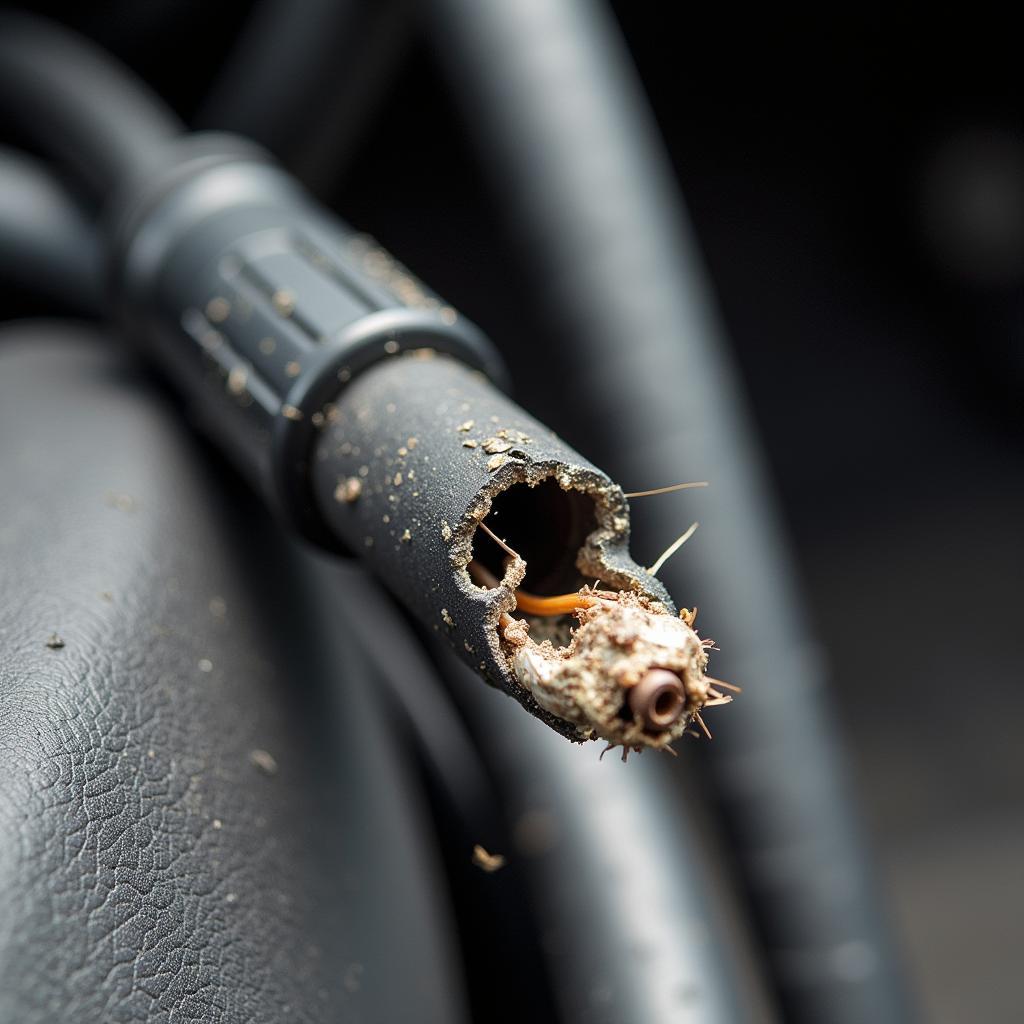Jump starting a car is a common solution to a dead battery. But what happens when the problem isn’t just a dead battery, but a faulty starter? This guide dives into the complexities of Jump Start Car Starter Problems, offering practical advice for car owners, mechanics, and automotive technicians.
Similar to common problems with car starters, a failed jump start often points to a deeper issue. A car that won’t start even after a jump can be frustrating and concerning. There are several reasons why your car might exhibit this behavior, ranging from a simple loose connection to a more serious problem with the starter motor itself. This article will help you diagnose and potentially fix the underlying issue.
Why Won’t My Car Start After a Jump?
One of the most common reasons a car won’t start after a jump is a faulty starter motor. The starter is responsible for cranking the engine, and if it’s malfunctioning, the engine won’t turn over even with a boost from another battery. Other potential culprits include corroded battery terminals, a faulty alternator, or even a bad ignition switch. Understanding these different components is key to troubleshooting effectively.
Another less common but still possible reason is a problem with the vehicle’s computer system. Modern vehicles rely heavily on computers to control various functions, including starting the engine. If there’s a software glitch or a problem with a sensor, it could prevent the car from starting.
Diagnosing Jump Start Car Starter Problems
Diagnosing the root cause of your jump start car starter problem requires a systematic approach. First, double-check the jumper cable connections. Make sure they’re securely attached to both the good battery and the dead battery, ensuring proper polarity. Next, inspect the battery terminals for corrosion. If they’re corroded, clean them with a wire brush and baking soda solution.
If the connections and terminals are good, the next step is to test the starter. You can do this using a multimeter or a test light to check for power at the starter solenoid when the key is turned to the “start” position. No power indicates a problem in the starting circuit, perhaps a faulty ignition switch or a blown fuse.
As mentioned earlier, like problems with the movie cars, sometimes the issue is not mechanical but electrical. Consider factors like faulty wiring or even problems with the car’s computer system.
Fixing the Problem
Once you’ve diagnosed the issue, fixing the jump start car starter problem becomes much more straightforward. If the starter is faulty, it will need to be replaced. While this can be a DIY project, it’s often best left to a qualified mechanic. Other problems, such as corroded terminals, are easily fixed by cleaning them thoroughly. A bad alternator will need replacement.
“A common mistake people make is assuming the battery is dead when it’s actually the starter,” says John Smith, a veteran automotive technician with over 20 years of experience. “Always test the starter before replacing the battery. You’ll save yourself time and money.”
Preventing Future Jump Start Car Starter Problems
Regular car maintenance is crucial for preventing future jump start car starter problems. Keeping the battery terminals clean and ensuring the charging system is functioning correctly can prevent many starting issues.
Just like with 12v car jump starter & portable power bank problems, it’s crucial to ensure proper maintenance of your car’s electrical system to avoid similar situations. Regular inspections and cleaning can prevent future jump start issues.
“Preventive maintenance is key,” adds Jane Doe, a certified mechanic specializing in electrical systems. “Simple checks like cleaning your battery terminals can go a long way in preventing starter problems down the line.”
Conclusion
Jump start car starter problems can be frustrating, but with a systematic approach to diagnosis and repair, they can be resolved. Remember to check the basics like cable connections and battery terminals before moving on to more complex components like the starter motor or ignition system. Regular maintenance can prevent many of these issues from occurring in the first place. If you’re unsure about any step, it’s always best to consult a qualified mechanic. Connect with us at AutoTipPro for further assistance. Our phone number is +1 (641) 206-8880 and our office is located at 500 N St Mary’s St, San Antonio, TX 78205, United States.
Similar to python car starter problems, always make sure you’re following the correct procedures for jump-starting your car to prevent further damage. Referring to your car’s manual can provide valuable information and guidelines.
FAQ
- What are the most common causes of jump start car starter problems? Faulty starter motor, corroded battery terminals, bad alternator, or a faulty ignition switch.
- How can I test my car starter? You can use a multimeter or test light to check for power at the starter solenoid.
- Can I replace a car starter myself? It is possible, but it’s often best left to a professional mechanic.
- How can I prevent future jump start car starter problems? Regular maintenance, including cleaning battery terminals and checking the charging system.
- What should I do if my car still won’t start after a jump start and checking all the basics? Consult a qualified mechanic for a thorough diagnosis.
- Are there any online resources to help me troubleshoot car starting problems? Yes, websites like car problems and fixes can provide helpful information.
- What if my jump starter doesn’t seem to be working? You might want to check for potential 12v car jump starter & portable power bank problems to rule out issues with the jump starter itself.







Leave a Reply